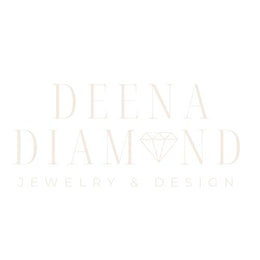When it comes to purchasing a diamond, there are several factors to consider, one of the most important being color. Diamond color grading plays a significant role in determining the overall value and aesthetic appeal of a diamond. In this blog post, we'll delve into the intricacies of diamond color grading, shedding light on what it entails and why it matters.
Understanding Diamond Color:
Contrary to what some may believe, diamonds come in a variety of colors, ranging from colorless to yellow or even fancy colors like pink or blue. The Gemological Institute of America (GIA) developed a standardized color grading scale that ranges from D (colorless) to Z (light yellow or brown). The closer a diamond is to colorless, the higher its value tends to be.
Factors Influencing Diamond Color:
Several factors can influence the color of a diamond, including the presence of trace elements and structural defects within the crystal lattice. Nitrogen, for example, is a common impurity that can impart a yellowish hue to diamonds. Additionally, certain treatments and enhancements can affect a diamond's color, so it's essential to be aware of these factors when making a purchase.
The Importance of Diamond Color Grading:
Diamond color grading serves as a universal language within the jewelry industry, providing buyers and sellers with a standardized way to communicate about a diamond's color characteristics. This grading system enables consumers to make informed decisions based on their preferences and budget constraints. Whether you're in the market for a dazzling colorless diamond or a unique fancy colored gem, understanding color grading can help you find the perfect stone.
The Role of Certification:
When purchasing a diamond, it's crucial to ensure that it comes with a reputable certification from a recognized gemological laboratory, such as the GIA or the American Gem Society (AGS). These certifications provide detailed information about the diamond's color grade, among other essential characteristics, giving buyers peace of mind and confidence in their investment.
Tips for Choosing the Right Diamond Color:
1. Determine your budget: Colorless diamonds (D-F) typically command higher prices, so it's essential to establish a budget that aligns with your preferences and financial constraints.
2. Consider the setting: The metal of the setting can influence how the diamond's color appears. For example, a yellow gold setting may complement a slightly warmer diamond color, while a platinum setting may enhance the brilliance of a colorless stone.
3. View diamonds in different lighting conditions: Natural and artificial lighting can affect how a diamond's color is perceived. It's advisable to view diamonds in various lighting environments to ensure that you're satisfied with the color under different conditions.
Deena Diamonds Final Message:
Diamond color grading is a critical aspect of the diamond buying process, influencing both the appearance and value of a stone. By understanding the factors that contribute to diamond color and familiarizing yourself with the grading scale, you can make informed decisions and select a diamond that reflects your personal style and preferences. Whether you're drawn to the timeless elegance of a colorless diamond or the vibrant allure of a fancy colored gem, color grading empowers you to find the perfect diamond for any occasion.
